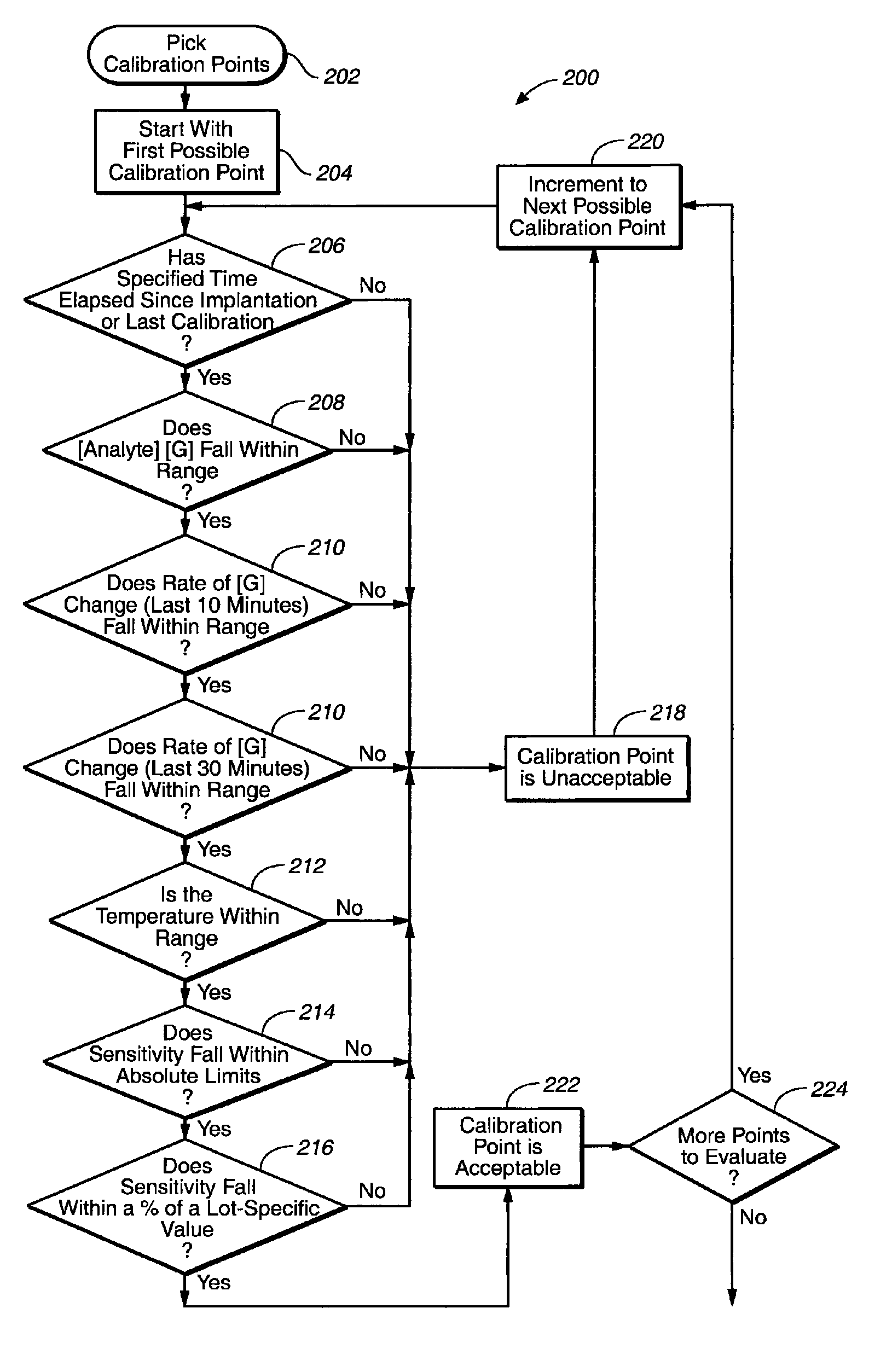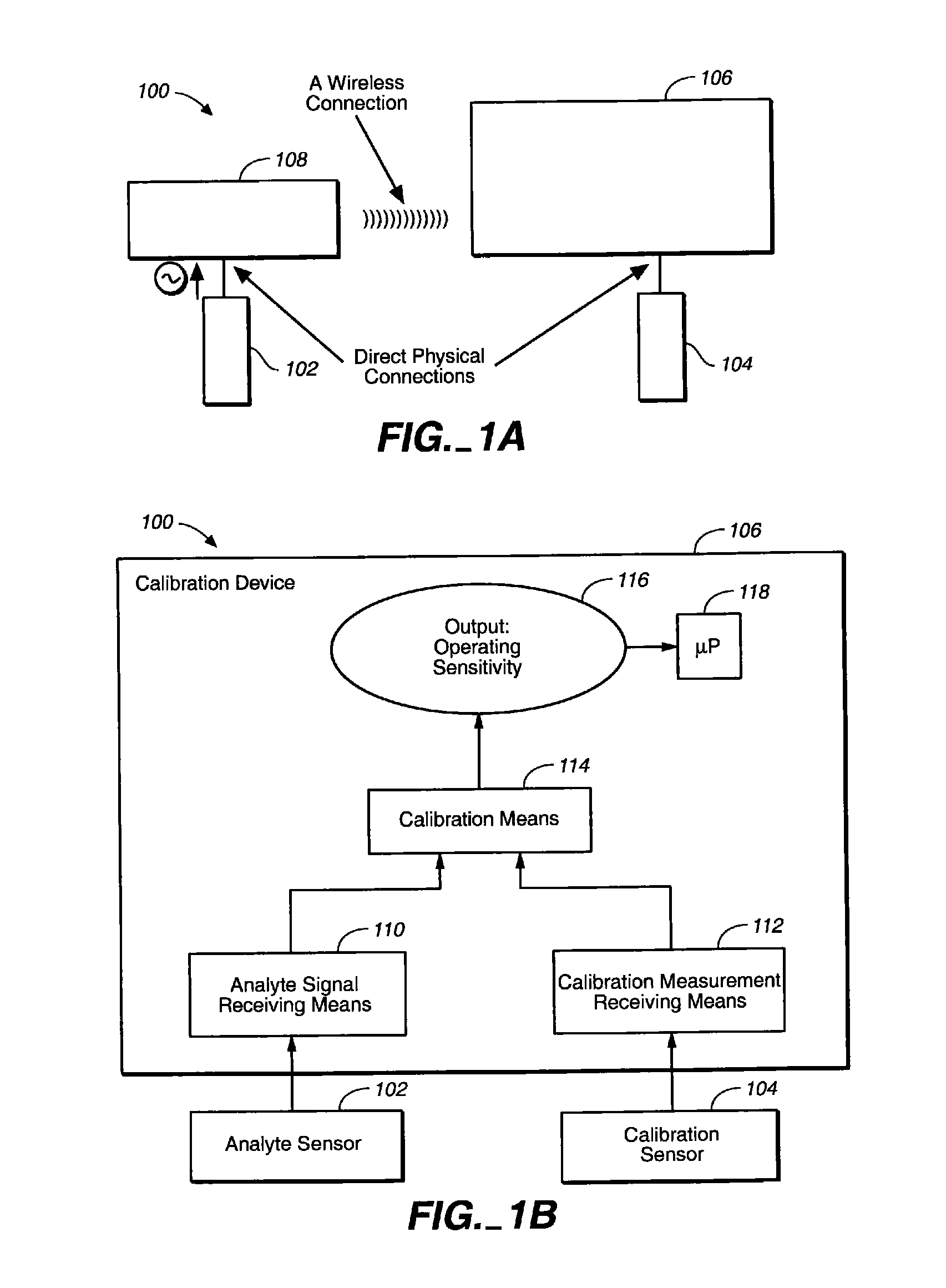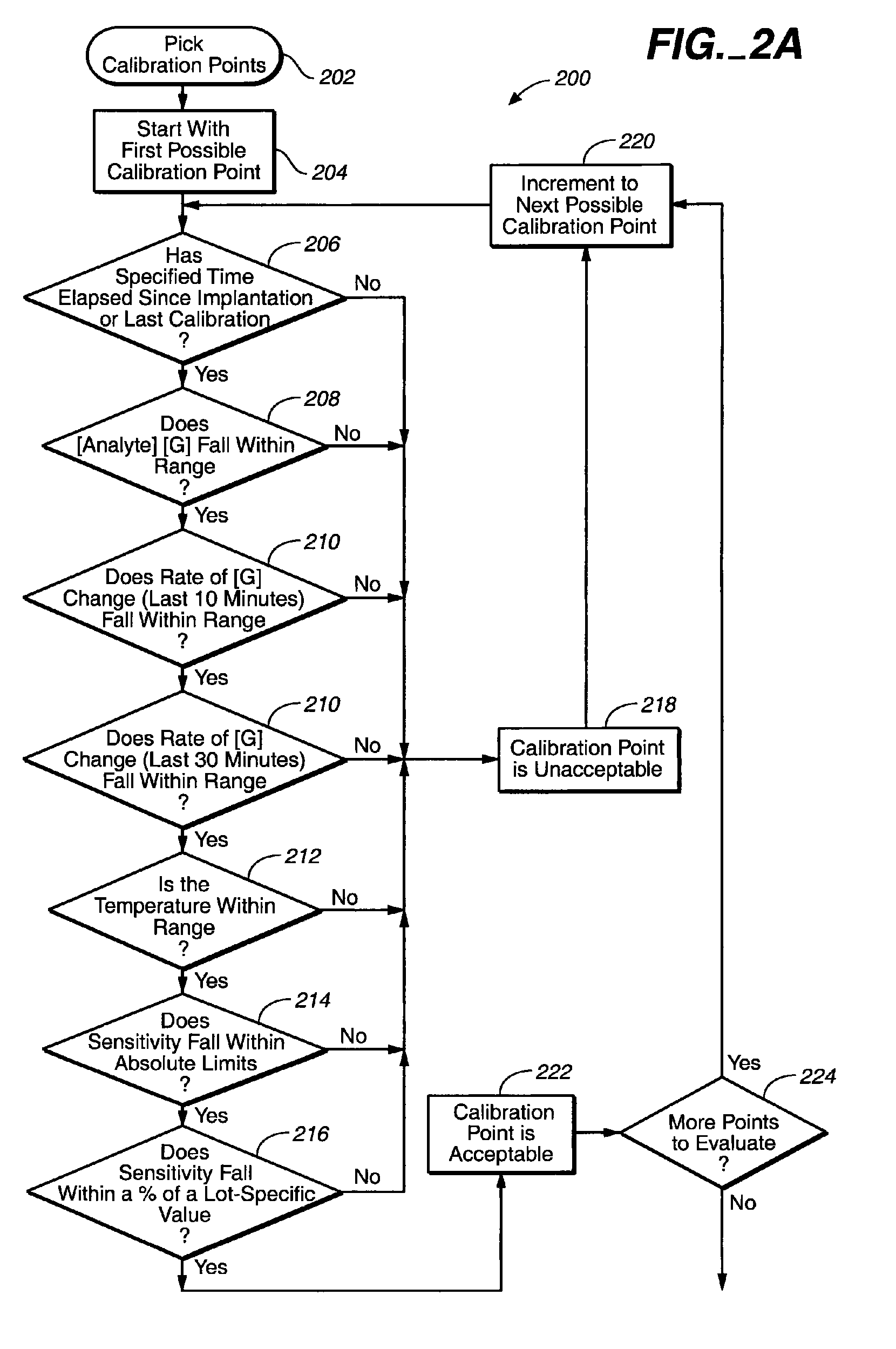Correlation of alternative site blood and interstitial fluid glucose concentrations to venous glucose concentration
a technology of interstitial fluid and glucose concentration, which is applied in the field of calibration of an analyte measurement device, can solve the problems of the individual's calibration device, and achieve the effects of enhancing fluid mobility, less pressure, and enhancing fluid mobility
- Summary
- Abstract
- Description
- Claims
- Application Information
AI Technical Summary
Benefits of technology
Problems solved by technology
Method used
Image
Examples
experimental study
[0089]In a sensor-response study, 48 subcutaneous sensors based on Wired Enzyme™ sensing technology were implanted in patients with Type 1 diabetes (25 in the upper arm, and 23 in the abdomen). These implanted sensors were prospectively calibrated using capillary blood. When glucose concentration values from the sensors were compared with those from venous plasma obtained at 15-minute intervals, ninety-eight percent of the values fell in a zone consisting of the clinically accurate Clarke error grid zone A and the clinically acceptable zone B. Neither the site of the implanted sensor (upper arm versus abdomen) nor the site of the capillary blood extraction (arm versus finger) affected system accuracy. The foregoing study and results are further described herein, following the introduction below.
Introduction
[0090]Evidence suggests that improved glycemic control can minimize many of the complications associated with Type 1 diabetes. (See, Diabetes Control and Complications Trial Resea...
study 2
le® Blood Glucose Monitoring System Forearm Tests versus Venous YSI
[0138]At monthly intervals 20 subjects with Type 1 diabetes or Type 2 diabetes were tested twice on the forearm (AST) and twice on the fingertip by a trained technician using the FreeStyle® system. Shortly following these tests a venous sample was drawn and tested with YSI. The study was conducted over the years 2000-2005 at one clinical site. A total of 1,147 subjects were tested to produce 2,212 forearm and 2,269 fingertip blood glucose tests paired with YSI.
[0139]The glucose time lag between two samples, e.g. interstitial fluid and venous blood, can be derived from the clinical data using the equation below:
Glucose difference=lag time*rate of glucose change+c
[0140]where c should equal zero since there would be no difference when the rate is zero (unless there was a systematic bias to the reference). The lag time versus venous blood for FreeStyle Navigator® continuous readings was 11.8 minutes.
[0141]The absolute d...
PUM
| Property | Measurement | Unit |
|---|---|---|
| concentration | aaaaa | aaaaa |
| volume | aaaaa | aaaaa |
| volume | aaaaa | aaaaa |
Abstract
Description
Claims
Application Information
 Login to View More
Login to View More - R&D
- Intellectual Property
- Life Sciences
- Materials
- Tech Scout
- Unparalleled Data Quality
- Higher Quality Content
- 60% Fewer Hallucinations
Browse by: Latest US Patents, China's latest patents, Technical Efficacy Thesaurus, Application Domain, Technology Topic, Popular Technical Reports.
© 2025 PatSnap. All rights reserved.Legal|Privacy policy|Modern Slavery Act Transparency Statement|Sitemap|About US| Contact US: help@patsnap.com



